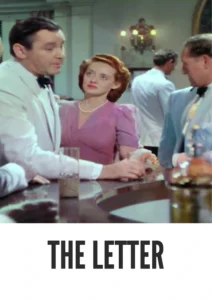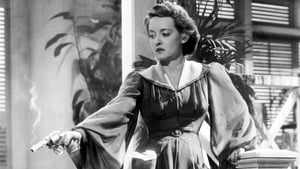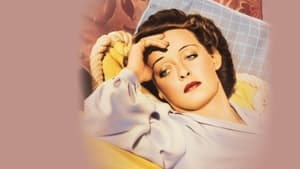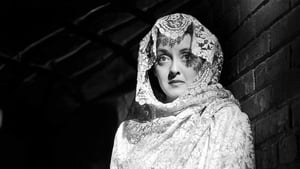Video Sources 0 Views

Synopsis
Passion, Betrayal, and Murder: The Letter (1940) in Vivid Color

Step into the sultry world of pre-war Singapore with The Letter, a gripping romantic drama from 1940, now beautifully colorized for a viewing experience filled with heightened emotion and suspense. Starring the iconic Bette Davis and Herbert Marshall, and directed by William Wyler, this film noir masterpiece explores themes of passion, betrayal, and the dark secrets that lie beneath a veneer of respectability. If you’re a fan of classic cinema, intense performances, and morally complex stories, this HD download will captivate you. This film is based on the play of the same name by W. Somerset Maugham.
The Letter Storyline: A Scandalous Crime Unveiled
The Letter unfolds in a British rubber plantation in Singapore. The story centers around Leslie Crosbie (Bette Davis), the wife of Robert Crosbie (Herbert Marshall), who claims to have killed a family friend, Geoffrey Hammond, in self-defense. The event immediately casts suspicion and intrigue, setting off a series of events.As the trial begins, a letter surfaces revealing a passionate affair between Leslie and Geoffrey, threatening to unravel her carefully constructed facade of innocence. Howard Joyce, Leslie’s lawyer, played by James Stephenson, must navigate through the complexities of the case, ultimately uncovering a web of deceit, forbidden love, and tragic consequences. The film masterfully depicts the unraveling of Leslie’s carefully constructed world as the truth emerges, leading to a dramatic and unforgettable climax.
Movie Cast
The film features stellar performances from its talented cast:
- Bette Davis as Leslie Crosbie
- Herbert Marshall as Robert Crosbie
- James Stephenson as Howard Joyce
- Frieda Inescort as Dorothy Joyce
- Gale Sondergaard as The Eurasian Woman
Movie Genre
The Letter is a romantic drama with film noir elements, combining intense emotional themes with the visual style and moral ambiguity characteristic of the noir genre.
Historical Context: Pre-Code Sensibilities and Hollywood’s Golden Age
Released in 1940, The Letter arrived during Hollywood’s Golden Age, a time of sophisticated storytelling and iconic performances. Although not technically pre-code, the film retains a certain moral complexity and willingness to explore darker themes. The film reflects the era’s evolving attitudes towards love, marriage, and social expectations, offering a compelling glimpse into the anxieties and passions of the time.
Colorization Details
This colorized version of The Letter has been meticulously restored using advanced digital techniques, enhancing the visual depth and emotional impact of the film. The colorization process involved detailed analysis of the original black and white cinematography, with careful attention paid to recreating the atmosphere of colonial Singapore. State-of-the-art algorithms were used to select appropriate color palettes and enhance image details, bringing a new level of vibrancy to the performances and settings. This restoration honors the original artistic vision while making the film more accessible and engaging for contemporary audiences.
Technical Details
- Director: William Wyler
- Screenplay: Howard Koch
- Based on: the play by W. Somerset Maugham
- Cinematography: Gaetano Gaudio
- Edited by: George Amy
- Production Company: Warner Bros.
- Distributed by: Warner Bros.
- Runtime: 95 minutes
Technical Specifications
- Download Format: MP4
- Resolution: HD (1080p)
- Compatibility: Compatible with most devices, including smartphones, tablets, computers, and smart TVs.
Reviews and Critical Reception
The Letter (1940) is widely regarded as a classic of Hollywood’s Golden Age, praised for its compelling story, outstanding performances, and masterful direction. Bette Davis’s portrayal of Leslie Crosbie is considered one of her finest roles, showcasing her ability to convey complex emotions and moral ambiguity. The film was a critical and commercial success upon its release, solidifying its place in cinematic history. The Letter remains a powerful and thought-provoking film, continuing to resonate with audiences today.
FAQs
- Q: What is The Letter about?
- A: The Letter is a romantic drama about a woman in colonial Singapore who claims to have killed an acquaintance in self-defense, but a letter reveals a more complex story.
- Q: Is The Letter (1940) a well-regarded film?
- A: Yes, The Letter is considered a classic of Hollywood’s Golden Age, known for its compelling story and outstanding performances, especially by Bette Davis.
- Q: Is this version of The Letter colorized?
- A: Yes, this version has been professionally colorized to enhance the viewing experience.
- Q: What makes The Letter interesting for classic film fans?
- A: The Letter offers a glimpse into the moral complexities and social expectations of the 1940s, with a captivating story and iconic performances.
- Q: What is the download format?
- A: The download format is MP4, which is compatible with most devices.
- Q: What resolution is the download?
- A: The resolution is HD (1080p), providing a high-quality viewing experience.
Download Now in HD!
Watch The Letter Today!













